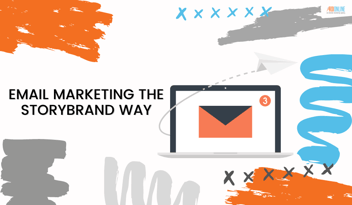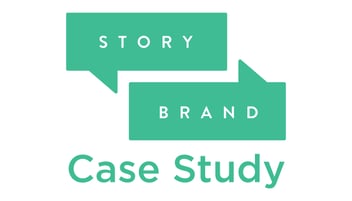The Next Big Thing In Storytelling Marketing: Aligning Your Story With Your Sales Processes
One of the most revolutionary ideas in the marketing industry today is the idea of “storytelling marketing.” In a world where customers have access to hundreds of competitors’ products at their fingertips, businesses need marketing that gives them an edge.
But traditional marketing often fails to deliver a worthwhile ROI. Your customers are exposed to thousands of advertising messages every day. You need more than a billboard to catch their attention.
That’s where storytelling comes in. Storytelling marketing popped up during the last decade as a solution to catching your audience’s attention in a sea of messages. And today, it’s going a step further. Instead of just supporting the marketing aspect of businesses, it’s branching into sales processes as well.
The result? A more effective, more powerful, 100% cohesive funnel that guides sales leads straight from the awareness stage and into buying stage.
So what does this process look like, and how can you apply it to your own marketing machine? Grab some popcorn and hold on. We’re going for a ride.
A Brief History Of Storytelling Marketing (And Why It Works)
Storytelling has been our natural and preferred form of communication. We do it every day without even thinking about it. You can see it when you sit down to dinner with friends and someone tells a story about their day. Before you know it, everyone else adds on with their own experiences, or an entirely new story starts to take shape.
Storytelling is natural communication. So it makes sense that applying it to your marketing would be a natural choice. Why else was Donald Miller’s Building A StoryBrand a New York Times Bestseller and the no. 2 best seller on Amazon’s 2019 business book list?
By incorporating intellectual and emotional elements into a story that centers on your customer, you can create content that resonates with leads.
Storytelling Generates Leads, But What About The Follow-Through?
Storytelling isn’t a one-way street. Sure, you can generate a significant quantity of leads transforming your content into an easy-to-digest story, but how do you convert them? What’s the follow-through?
Here’s the answer: the follow-through is, quite simply, an organized sales process. And that starts with sales enablement.
Sales enablement is defined as the process of providing helpful tools (information, resources, training, content, etc.) to support your sales team as they close leads. Sales enablement is key to streamlining the sales process which can (drumroll, please) generate more sales.
Once you’ve created content that sells a story (blogs, web pages, emails, flyers), the next step would be to create sales enablement content that supplements the story and supports the sales team. Have your sales team make a list of their most commonly asked question. Then, come up with a marketing strategy to address those questions.
Examples of content that helps support sales include:
-
Blogs
-
Sales email templates
-
Ebooks, guides, infographics, whitepapers, and other downloadable freebies
-
Case studies and reports to back up your sales claims
-
Scripts your sales team can follow
-
Presentations and other resources for sales calls
-
Social media posts and ads
-
Product sheets
-
Who is it for
-
What does it do
-
How does it help
-
What is the cost
Closing The Deal With Lead Segmentation
Once you’ve developed sales content that supports your storytelling content, it’s time to identify qualified leads and nurture them. Basically, you need to sort your leads into three groups: people who have drunk your business’s Kool-Aid (Sales Qualified Leads), people who might buy into your products/services (Marketing Qualified Leads), and people who aren’t interested or a good fit (Cold Leads).
A sales qualified lead is your main focus and who your sales team will be contacting. They’re a contact that has interacted with sales content. Those interactions can include:
-
Submitting a contact form
-
Downloading a case study or pricing chart
-
Requesting a quote
-
Attended a meeting with your team
These interactions indicate that the customer could be ready for direct contact with the sales department. Nurturing your leads through sales contacts can help create more meaningful relationships with potential customers.
What about those MQLs and cold leads? Well, that’s a whole different story. MQLs will need to be nurtured by marketing before your sales team contacts them. This is where those lead nurturing email series come in handy.
As for cold leads, there’s still an option of nurturing potential customers who aren’t interested. But those who aren’t qualified or a good fit aren’t going to be worth your time. It’s better to invest in leads who mesh with your business than to spend resources chasing those that don’t.
Get A Marketing Machine That Supports Your Business Every Step Of The Way
Robert McKee, an authority on the power of storytelling, stated, “Storytelling is the most powerful way to put ideas into the world today.”
And he’s not wrong. But, there is more to it.
Storytelling is just one step. When you pair it with solid follow-through, your lead can easily become an active, paying customer.
Good Storytelling + Solid Follow-Through = Engaged & Active Customers
And that means more sales for you!
 We can’t hide our excitement over the connections between storytelling and sales processes, which is why we developed the QuickStart Plan.
We can’t hide our excitement over the connections between storytelling and sales processes, which is why we developed the QuickStart Plan.
ROI’s QuickStart Plan helps support and strengthen your sales and marketing by providing sales enabled content that is built exclusively around your story.
If you have a story to tell and want to guide your leads straight into the buying stage, download our QuickStart Plan today! With this plan, you’ll learn how the ROI Online process creates a marketing machine designed to support both sales and marketing.






